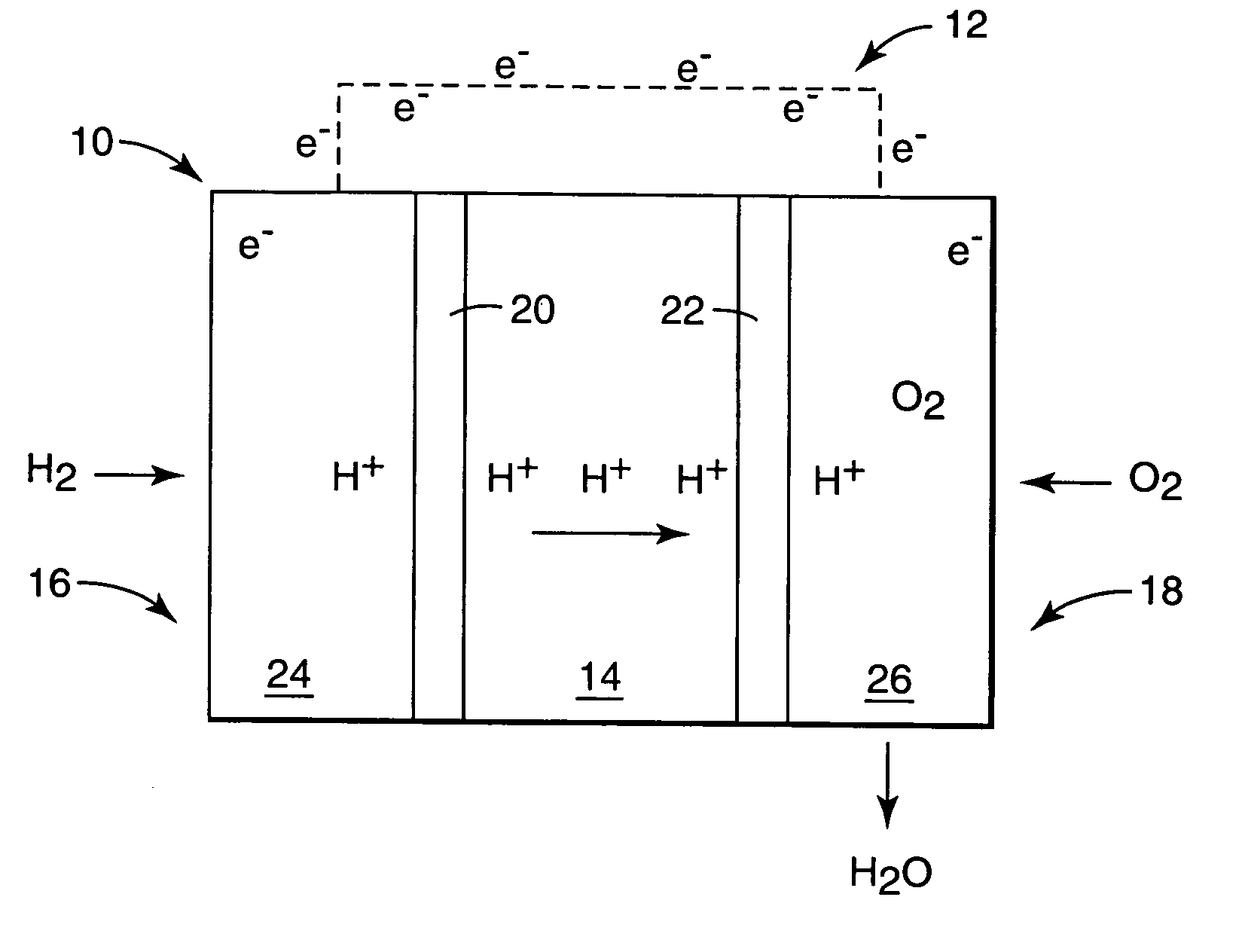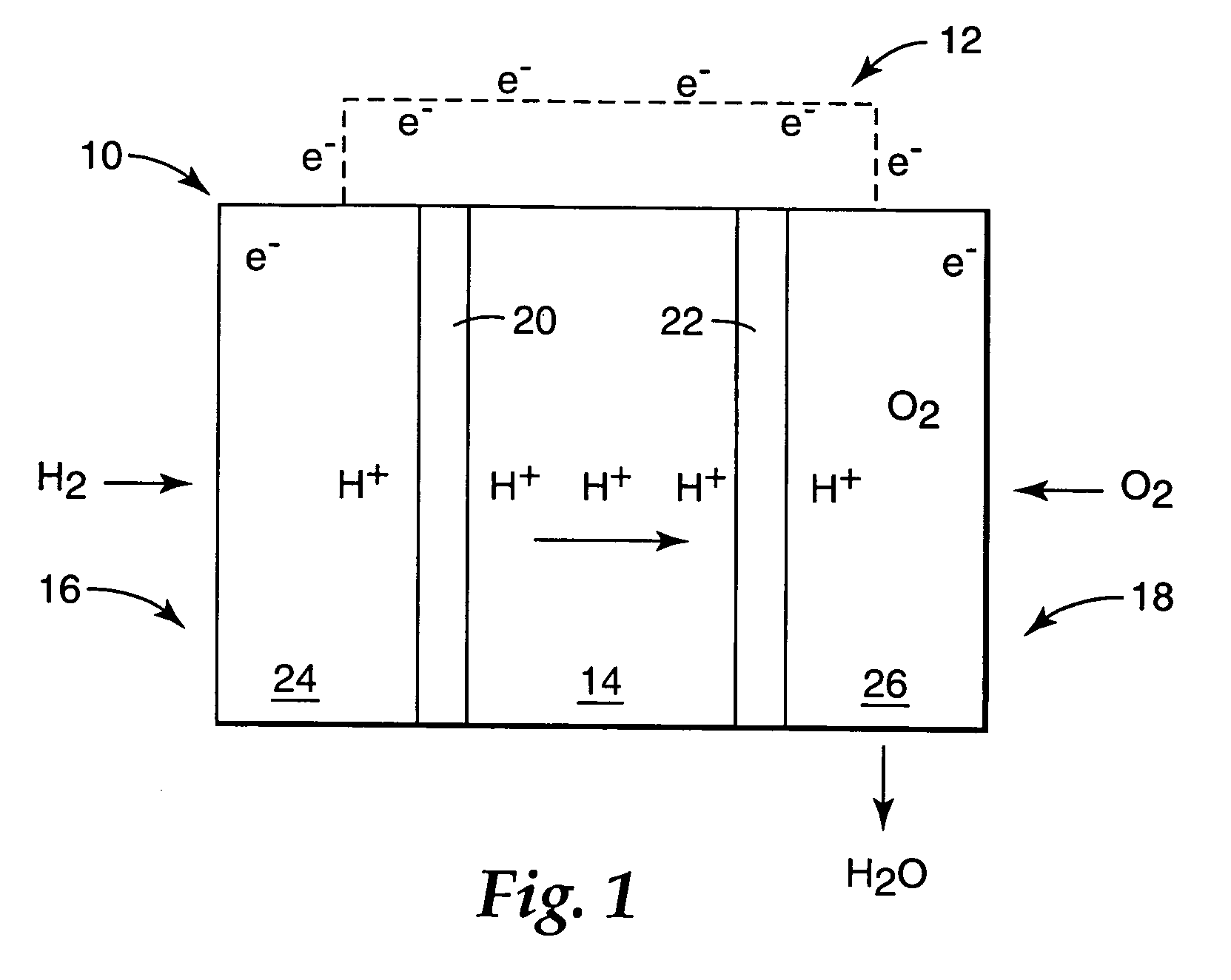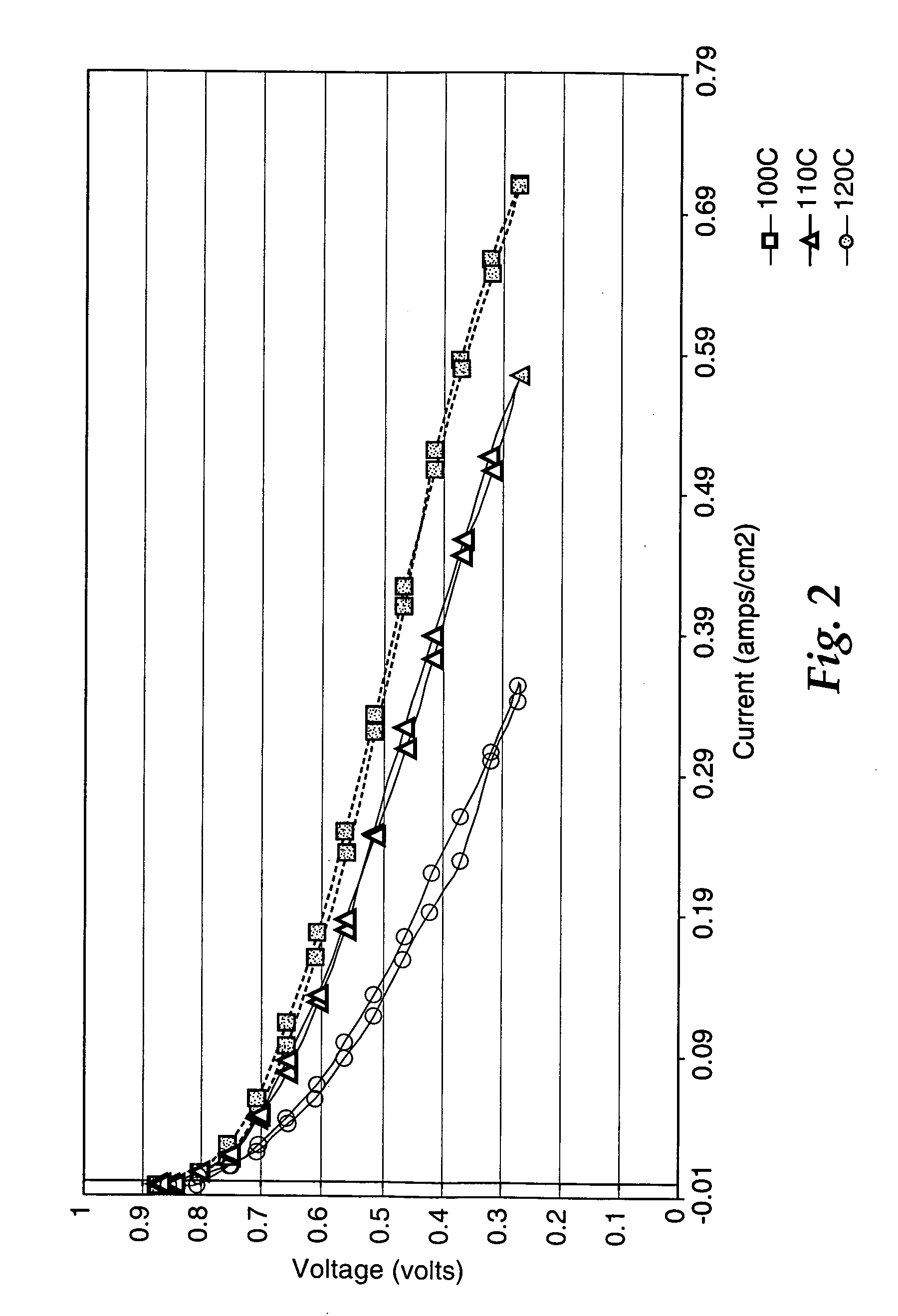Fuel cell electrolyte membrane with basic polymer
- Summary
- Abstract
- Description
- Claims
- Application Information
AI Technical Summary
Benefits of technology
Problems solved by technology
Method used
Image
Examples
example 1
[0074] The membrane of Example 1 was prepared pursuant to the following procedure. PBI was initially dried at 138° C. in a vacuum oven for 12 hours at 5-10 mmHg using a nitrogen purge stream. The high molecular weight fraction of the PBI was then obtained by refluxing a mixture of about 20% by weight PBI in dry DMAc (<0.005% by weight water) for 5 hours. The mixture was then filtered to remove the undissolved high molecular weight PBI, which constituted about 25% by weight of the total initial mass of the PBI. The high molecular weight fraction had an inherent viscosity of 1.35 deciliters / gram in 96% sulfuric acid at 30° C., as compared to 1.08 deciliters / gram for PBI before fractionation. Viscosities were measured using an Ubbelohde 1B viscometer. The high molecular weight PBI was then dissolved at about 5% by weight in DMAc at 260° C. using a Parr pressure vessel (model 4563, 600 milliliters). Pressure generated was about 100 psi. This solution was then concentrated using a rotary...
example 2
[0082] The membrane of Example 2 included PBIO in lieu of PBI, and was prepared pursuant to the following procedure. PBIO was initially dried at 138° C. in a vacuum oven for 12 hours at 5-10 mmHg using a nitrogen purge stream. The PBIO was then dissolved in dry NMP (2). The PBIO solution was then concentrated to 10% by weight using a rotary evaporator (“PBIO solution”).
[0083] AF-100 and SiWA inorganic powders were then dispersed in the PBIO solution to form a “PBIO / inorganic dispersion” in the same manner as discussed above in Example 1 for the PBI / inorganic dispersion. The only exception was that the solution viscosity was adjusted as necessary by adding incremental amounts of NMP to the glass bottle.
[0084] C4-bis-imide acid was dissolved in NMP to form a 20% acid solution. The calculated mass of dry C4-bis-imide acid was transferred into a small vial inside a nitrogen purged dry box. A total of about 0.25 g of the C1-bis-imide acid was used. The calculated amount of NMP was adde...
examples 3 and 4
[0086] The membranes of Examples 3 and 4 were each prepared pursuant to the procedure discussed above for Example 2, except that disulfonate acid was used instead C4-bis-imide acid, AF-100 was used instead of the combination of AF-100 and SiWA, and the membranes of Examples 3 and 4 were not pressed into reinforcement matrices. Table 3 provides the component concentrations, the acid-to-base equivalencies, and the thicknesses of the membranes of Examples 3 and 4.
TABLE 3Example 3Example 4CompositionPercent by WeightPercent by WeightDisulfonate Acid64.858.2PBIO Basic Polymer16.519.7AF-100 Inorganic Additive18.722.1Acid-to-Base Equivalency4:13:1Membrane Thickness (mils)1.7-2.01.9-2.1
PUM
| Property | Measurement | Unit |
|---|---|---|
| Temperature | aaaaa | aaaaa |
| Temperature | aaaaa | aaaaa |
| Temperature | aaaaa | aaaaa |
Abstract
Description
Claims
Application Information
 Login to View More
Login to View More - R&D
- Intellectual Property
- Life Sciences
- Materials
- Tech Scout
- Unparalleled Data Quality
- Higher Quality Content
- 60% Fewer Hallucinations
Browse by: Latest US Patents, China's latest patents, Technical Efficacy Thesaurus, Application Domain, Technology Topic, Popular Technical Reports.
© 2025 PatSnap. All rights reserved.Legal|Privacy policy|Modern Slavery Act Transparency Statement|Sitemap|About US| Contact US: help@patsnap.com



